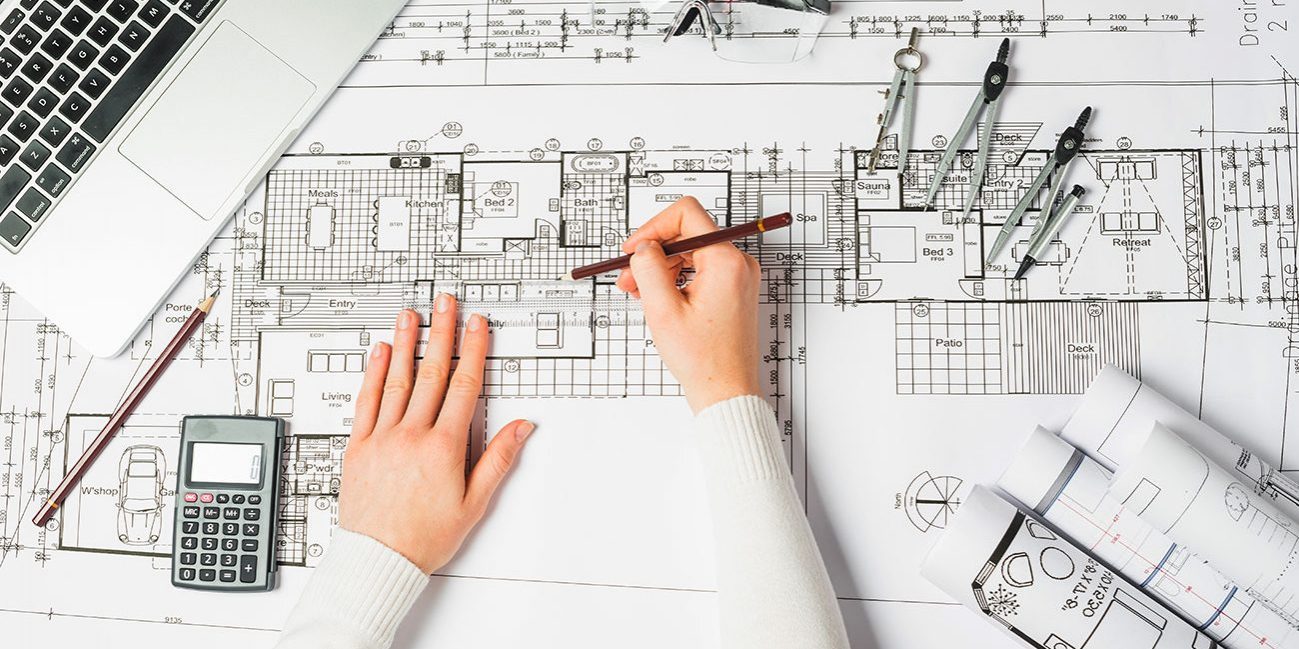Recognizing the Diverse Job Paths Available for Aspiring Architect
As a hopeful Architect, you have a world of job courses waiting for you. Whether you're drawn to conventional style or the nuances of sustainable style, there's a particular niche that aligns with your passions.
Standard Style: Creating Structures and Structures
Typical style concentrates on developing structures and frameworks that blend capability with visual charm. As you discover this area, you'll appreciate the elaborate balance in between form and objective. You'll learn to draw ideas from historic styles, integrating components like proportion, materials, and workmanship. Your designs can mirror cultural heritage, showcasing local customs while satisfying modern-day needs.
You'll establish skills in composing, model-making, and site analysis, enabling you to picture and interact your concepts successfully. Engaging with clients, you'll require to understand their vision and equate it into feasible styles.
In addition, developing codes and sustainability practices are necessary in your job, guaranteeing your structures are safe and eco-friendly. As you grow in your profession, you'll find opportunities in domestic, industrial, and even restoration jobs, each offering special challenges. Embracing standard design paves the means for a satisfying profession that admires the past while forming the future.
Urban Preparation: Forming Neighborhoods and Public Spaces
As an ambitious Architect, you can play a crucial duty as an urban planner, changing how areas communicate and work. By utilizing community involvement approaches, you'll guarantee that homeowners have a voice fit their environment. Plus, integrating sustainable design concepts will certainly help create areas that not just satisfy today's needs but additionally safeguard the future.
Function of Urban Planners
While numerous could believe of architects as the sole visionaries behind buildings, urban coordinators play a vital role in forming the wider landscape of areas and public areas. By teaming up with various stakeholders, you'll assist make parks, transportation systems, and domestic areas that advertise social interaction and accessibility. Your competence in spatial design and area characteristics permits you to envision future growth while maintaining cultural heritage.
Community Engagement Techniques
Effective area interaction strategies are crucial for city organizers to assure that the voices of locals are listened to and valued in the planning process. To promote significant discussion, you must focus on open discussion forums and workshops where area participants can express their ideas and issues. By proactively listening and including comments, you'll produce areas that show the area's demands, ultimately leading to even more sustainable and effective urban environments.
Sustainable Design Concepts
When developing urban areas, including sustainable layout principles is crucial for developing environments that grow both environmentally and socially. You should start by concentrating on energy performance, using materials that minimize waste and advertise recycling. Think about incorporating environment-friendly spaces, like parks and yards, to improve biodiversity and boost air top quality. Advertising walkability and public transport can lessen dependence on automobiles, cultivating a healthier neighborhood.
Creating with water conservation in mind is likewise crucial-- assume about rainfall yards and absorptive surfaces to manage stormwater. Entailing area participants throughout the planning procedure guarantees that the spaces you create meet their requirements and urge social interaction. By welcoming these principles, you'll contribute to vibrant, sustainable urban landscapes that profit every person.

Landscape Architecture: Developing Lasting Outdoor Atmospheres
As you check out landscape architecture, you'll discover important layout concepts that create gorgeous and functional exterior areas. Lasting techniques play a crucial duty in making certain these environments thrive while decreasing environmental effect. And also, you'll discover a variety of job possibilities that permit you to make a genuine distinction in exactly how people connect with nature.
Design Principles in Landscape
Comprehending layout principles in landscape style is vital for producing sustainable exterior environments that integrate with nature. You'll need to ponder aspects like scale, equilibrium, and proportion to guarantee your styles feel cohesive and inviting. Incorporating native plants not just improves biodiversity yet also lowers water use, making your landscape durable. Consider the flow of room and how individuals communicate with it; paths and seating locations ought to welcome expedition and relaxation. Additionally, focus on seasonal adjustments, creating with materials that match the surroundings year-round (Architect). By prioritizing sustainability and aesthetics, you can create outdoor spaces that improve the community and promote health. Accepting these concepts will establish a strong structure for your job in landscape style.
Lasting Practices Review
Sustainable methods in landscape architecture not just concentrate on visual appeals but also focus on ecological health and resource conservation. By incorporating native plants, you improve biodiversity and reduce the demand for chemical fertilizers and chemicals. Implementing reliable watering systems helps save water and decreases overflow, shielding nearby environments. You can design spaces that promote dirt health and wellness, such as making use of organic products and practicing permaculture concepts. In addition, incorporating green facilities, like rain yards and permeable pavements, help in stormwater management and lowers city heat. When you develop exterior atmospheres with sustainability in mind, you add to a healthier earth and give areas that promote community link. Ultimately, these methods ensure your layouts benefit both people and the environment for several years to find.
Job Opportunities Expedition
With a solid foundation in sustainable practices, landscape style uses a range of profession paths that permit you to make a significant influence on the environment. You could work as a landscape developer, developing aesthetically pleasing and useful outdoor rooms, or specialize in environmental reconstruction, aiding to revitalize damaged ecosystems. Urban coordinators usually collaborate with landscape architects to develop environment-friendly areas in urban setups, boosting city livability. If you're passionate regarding education, take into consideration ending up being a landscape design instructor, motivating future generations. Additionally, you might function with nonprofits concentrated on ecological sustainability or take part in research to innovate brand-new techniques. Each course not just shapes lovely atmospheres however also fosters a healthier earth for future generations.
Sustainable Style: Focusing on Eco-Friendly Practices
As you explore your job in click here style, accepting environmentally friendly methods can establish you apart in a competitive field. Sustainable layout concentrates on creating structures that reduce ecological effect while improving occupant well-being. By incorporating eco-friendly materials, energy-efficient systems, and lasting structure strategies, you'll add to a greener click here future.
Begin by getting understanding of green certifications like LEED or BREEAM, which can bolster your qualifications. Think about how all-natural light, air flow, and thermal effectiveness can enhance design. Collaborate with designers and environmental experts to introduce services that minimize waste and conserve sources.
Don't fail to remember the importance of community participation-- interesting neighborhood stakeholders can inspire styles that harmonize with the environment. As clients significantly focus on sustainability, your knowledge in eco-friendly practices will not just draw in jobs but also fulfill your passion for liable design. Embrace this vital facet of the career, and view your profession flourish.
Historical Preservation: Securing and Recovering Cultural Heritage
While you begin on your building trip, take into consideration the important duty of historic preservation in keeping our social heritage. This field concentrates on the protection and repair of considerable buildings, websites, and structures that inform the tales of our past. By participating in historical conservation, you'll help guard the building heritage that forms area identification.
As a historic preservation Architect, you'll examine historic importance and examine the problem of frameworks. You'll work very closely with chroniclers and conservationists to assure genuine remediation strategies are utilized. This job course permits you to mix creative thinking with research, enabling you to develop remedies that appreciate original materials and craftsmanship.
Your job not just adds to sustainability by recycling existing structures however also promotes a feeling of satisfaction within neighborhoods. Embracing this course will certainly help you come to be a guardian of history, preserving the tales and looks that improve our lives.
Inside Design: Enhancing Indoor Spaces
Historic preservation and indoor style both share a dedication to improving the built setting, yet they concentrate on different facets. While historic preservation highlights preserving a framework's social and historical worth, interior architecture absolutely nos in on optimizing indoor spaces for performance and aesthetics.
As an ambitious Architect, you'll discover that indoor design permits you to blend imagination with technological skills. You'll design areas that not only look good yet additionally promote convenience and efficiency. This field involves comprehending how light, shade, and materials connect within an area, affecting state of mind and use.
You'll deal with numerous tasks, from residential homes to commercial offices, making sure that each environment meets the needs of its owners. By focusing on customer experience, you can change insides into functional and motivating rooms, making a significant influence on how people interact with their surroundings. Accept the possibility to Architect enhance indoor settings and shape the method individuals function and live.
Industrial Design: Combining Capability With Visual Appeals
Commercial layout plays a crucial role in developing items that perfectly blend aesthetic appeals with capability, ensuring that what you utilize daily is not just aesthetically attractive however likewise useful. As a hopeful Architect, you might immerse on your own in this area, concentrating on developing everything from furnishings to consumer electronics. Your job involves comprehending customer needs, products, and producing processes, enabling you to create ingenious services that boost daily experiences.
In commercial design, you'll often collaborate with designers, makers, and online marketers, making sure that your styles are not just beautiful but likewise possible. This profession course supplies a vibrant atmosphere where creative thinking satisfies functionality, making it a satisfying selection for designers interested in shaping the products of tomorrow.
Often Asked Concerns
What Educational Certifications Do I Required to End Up Being an Architect?
To come to be a designer, you'll require an expert degree in style, generally a Bachelor's or Master's. Additionally, you'll have to complete a teaching fellowship and pass the Architect Enrollment Evaluation to exercise lawfully.
Exist Certification Requirements for Various Architectural Profession Paths?
Yes, there're accreditation needs for numerous architectural courses. Architect. You'll require to pass exams, complete teaching fellowships, and sometimes seek specialized training, depending on your selected emphasis, like landscape design, metropolitan layout, or historic preservation
What Software Application Abilities Are Crucial for Designers Today?

Just How Can I Gain Practical Experience While Studying Style?
You can acquire useful experience by interning at architectural firms, taking part in design competitors, volunteering for neighborhood projects, or teaming up with classmates on real-world assignments. These opportunities enhance your abilities and develop useful connections in the sector.
What Task Opportunities Exist Outside Standard Style Firms?
You can discover various job chances outside traditional design firms, like urban planning, interior decoration, landscape style, building monitoring, property advancement, or also duties in sustainability consulting. Each deals special challenges and benefits.
Whether you're attracted to traditional design or the subtleties of sustainable style, there's a particular niche that lines up with your rate of interests.When creating metropolitan spaces, incorporating lasting layout concepts is crucial for creating environments that flourish both environmentally and socially.As you discover landscape design, you'll discover necessary layout concepts that produce lovely and useful outdoor spaces.Understanding layout concepts in landscape style is necessary for creating sustainable exterior atmospheres that harmonize with nature.In commercial layout, you'll usually work together with suppliers, online marketers, and engineers, making sure that your designs are not just beautiful yet likewise possible.